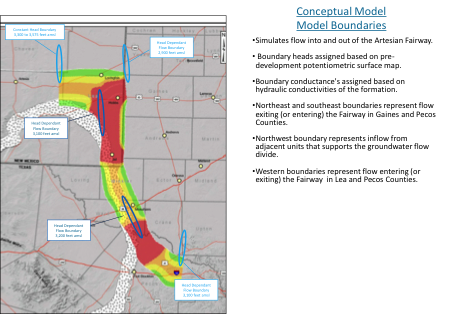APTAPB Research // Significant Findings RPSEA I
Significant Findings:
Certain data available from the variety of oil and gas well records provide evidence of the presence of residual oil zones. An important but only partial list includes: the presence of sour oil/gas, sulfur water, sulfur deposits, and bow shape porosity profiles from wireline logs, depressed water salinities and resistivity log character.
Well data formats and sources vary between states and collecting agencies. Compatibility and consistency of the multiple databases is often challenging and requires resolution and reconciliation for accuracy.
The Permian Basin type ROZs are often accompanied by less saline waters (mixed waters) than the main pay intervals. Very low salinities would suggest lower residual oil saturations.
Hydrodynamic modeling suggests flow gradients in the modeled fairway are very slow moving and consistent with piezometric gradients from landmark work by M. K. Hubbert on oil/water contact dips of 10-100 feet per mile.
APTA
APTAPB
2017 CO2 & ROZ School
Recent Posts
- Residual Oil Zone Interview 1: Intro with Steve Melzer
- Residual Oil Zone Interview 2 : Vello Kuuskraa
- Residual Oil Zones Interview 3: David Mohrbacher EOR and IOR in Wyoming
- Residual Oil Zone Interview 4: Steve Melzer- CO2 EOR in the Permian Basin
- DOE/National Energy Technology Laboratory – Next Generation ROZ Study (Goldsmith Field)




